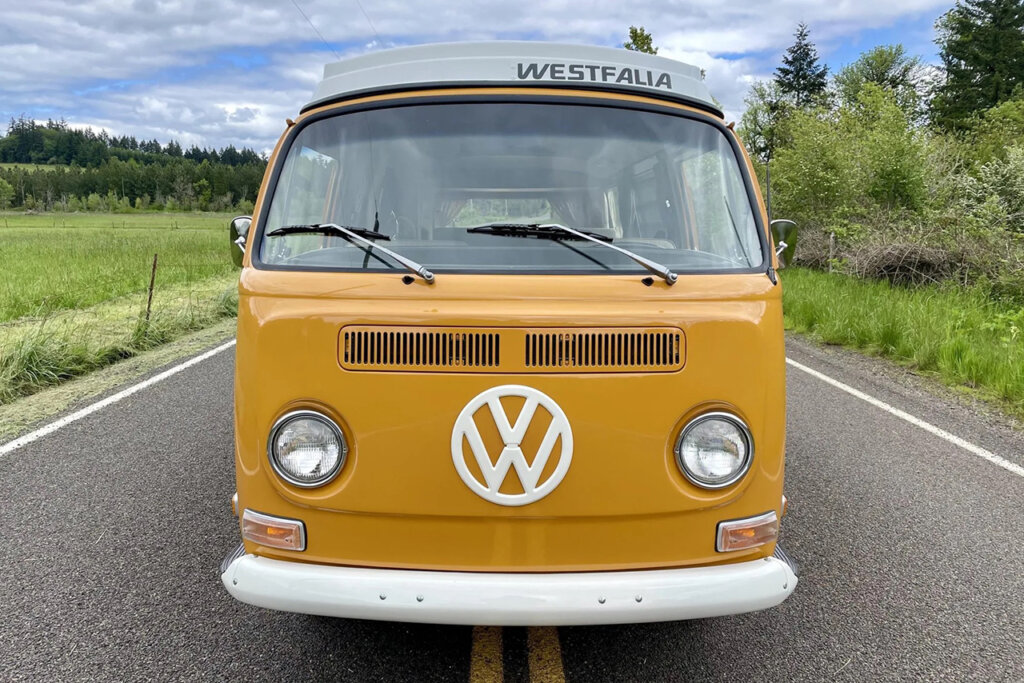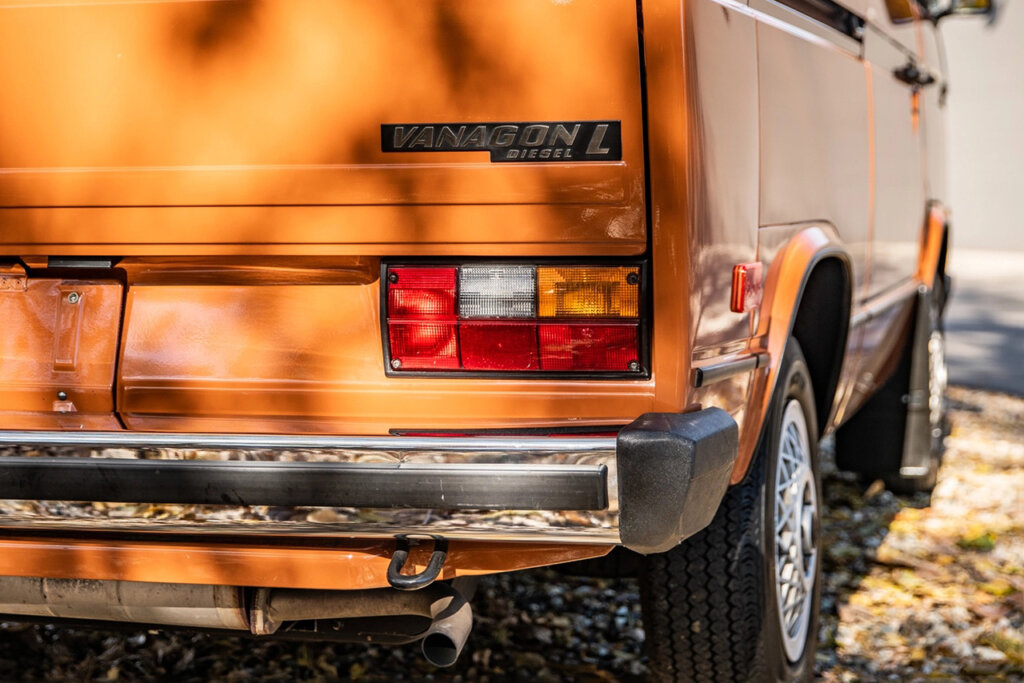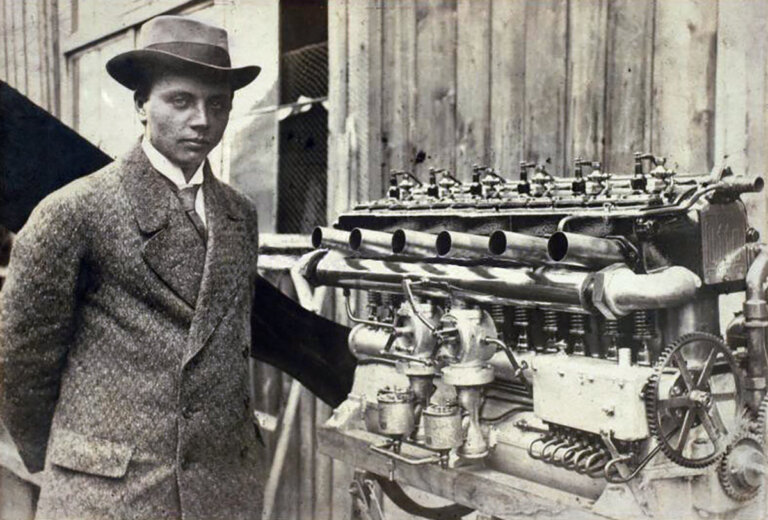Type 2 T2 (1968-1979)
The second-generation Volkswagen Bus, known as the Type 2 T2 or “Bay Window,” was introduced in 1967. This iteration featured significant design updates, most notably the introduction of a one-piece curved windshield, which replaced the iconic split windshield of the T1. The new design allowed for improved visibility and enhanced aerodynamics.

Source: Bring-A-Trailer
| Trim | Production | Engine | Power | Transmission | Drivetrain |
| T2 | 1967 – 1979 (Brazil produced until 2013) | 1.6 – 2.0L B4 (Rear-engine) | 47- 70 HP / 48 – 71 PS / 35 – 52 kW | 4-Speed Manual 3-Speed Automatic | RWD |
The T2 underwent various improvements, including a more powerful engine reaching a figure closer to 70 base hp, better suspension, and an updated interior. It continued to be a popular choice for families and adventurers, and its larger size and improved amenities made it more comfortable for longer journeys. The T2’s popularity soared in the United States, becoming the poster child for the hippie movement and the embodiment of the “flower power” era.

Source: Georg Sander via Flikr
Type 2 T3 (1979-1991)

The third and final air-cooled generation of the Volkswagen Bus, known as the Type 2 T3 or “Vanagon,” was introduced in 1979. With the T3, Volkswagen decided to modernize the design by adopting a more angular and boxy appearance. This generation marked a significant departure from the previous rear-engine layout, as it shifted to a front-engine configuration, offering more cabin space and better handling.


Source: Bring-A-Trailer
| Trim | Production | Engine | Power | Transmission | Drivetrain |
| T3 | 1979 – 1983 | 1.6 – 2.0L B4 Air-cooled (Rear-engine) | 50 – 70 HP / 51 – 71 PS / 37 – 51 kW | 4/5-Speed Manual 3-Speed Automatic | RWD |
| T3 | 1983 – 1991 | 1.9L – 2.1L Wasserboxer B4 Water-cooled (Rear-engine) | 83 – 112 HP / 84 – 113 PS / 61 – 83 kW | 4/5-Speed Manual 3-Speed Automatic | RWD |
The T3 featured various engine options, including water-cooled models, making it more efficient and capable on the road. Its enhanced driving dynamics and comfortable interior made it appealing to a broader audience beyond the counterculture enthusiasts. The T3 was offered in multiple variations, such as passenger vans, transporters, and camper versions, ensuring there was a model to suit every need.
VW EuroVan (Type 2 T4 1990 – 2003)

| Trim | Production | Engine | Power | Transmission | Drivetrain |
| T4 | 1990 – 2003 | 2.0 – 2.5L Inline 4/5 | 83 – 113 HP / 84 – 115 PS / 62 – 85 kW | 5-Speed Manual 4-Speed Automatic | FWD |
| T4 | 1996 – 2003 | 2.8L VR6 DOHC | 138 – 201 HP / 140 – 204 PS / 103 – 150 kW | 5-Speed Manual 4-Speed Automatic | FWD |
The T4 modernized and completely redefined the Type 2. The streamlined design included features such as: a sloping hood, modern headlights and the repositioning of a water-cooled engine to the front of the vehicle for enhanced performance and driving dynamics. It was also came equipped with contemporary amenities and safety features.

Source: Bring-A-Trailer

VW Westfalia Camper


Source: Bring-A-Trailer
Legendary camper conversion built on various VW Bus generations. Pop-top roof for additional headroom and sleeping space. Kitchenette, dining area, and sleeping quarters, ideal for road trips and camping. A symbol of the vanlife movement and nomadic adventures.









